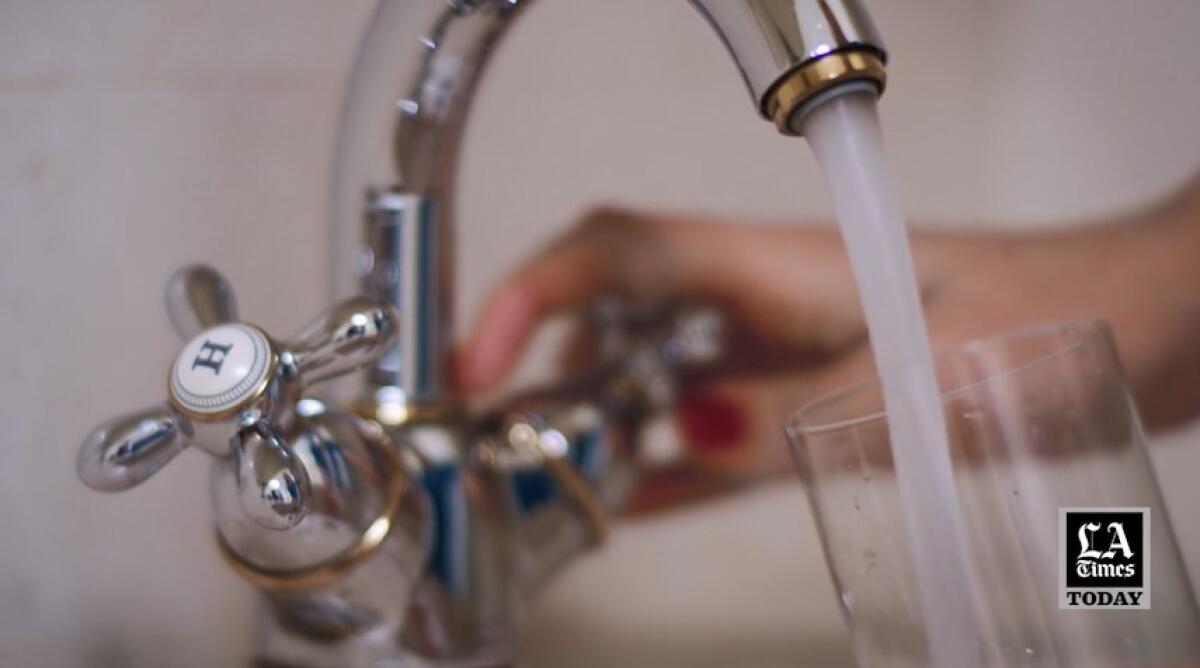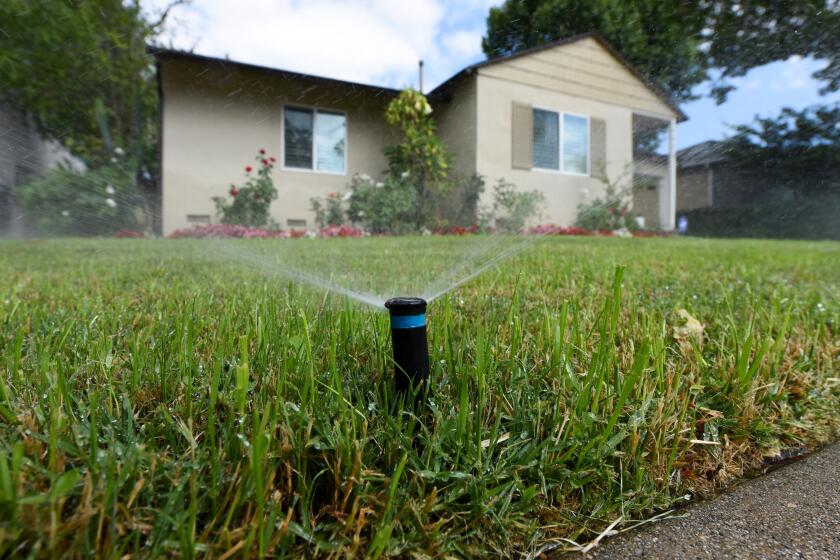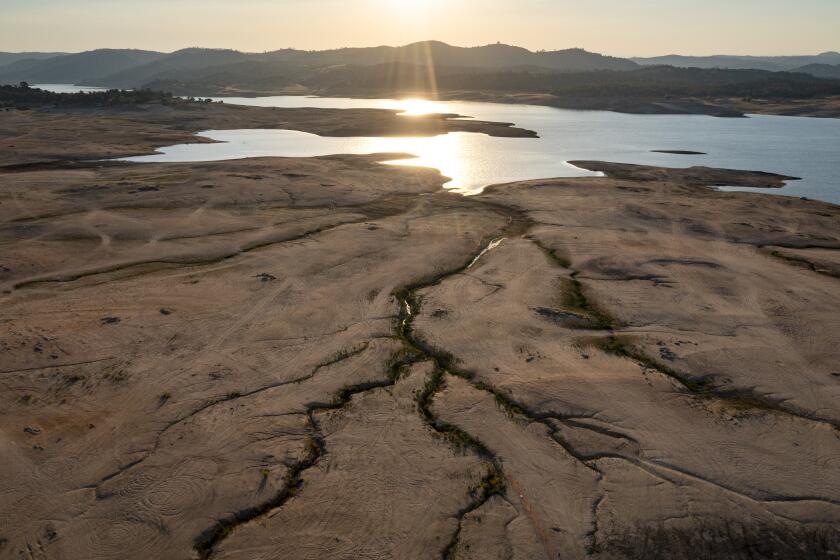As drought persists, Californians are ‘backsliding’ in effort to conserve water

- Share via
State water regulators urged Californians to do more to save water after the latest monthly data showed conservation lagging in September, with statewide water use in cities and towns decreasing 3.9% compared with the same month a year ago.
The reduction in water use was smaller than in August, when Californians used 5% less.
Gov. Gavin Newsom in July called for Californians to voluntarily cut water use 15%, but the latest figures, which were released Tuesday, show much of the state remains far from that goal.
“The backsliding isn’t welcome. But it is what it is,” said Joaquin Esquivel, chair of the State Water Resources Control Board. “We need to continue to focus on conserving in this critical time during drought.”
California’s past two water years, which ended Sept. 30, were the driest two years, based on statewide precipitation, in 126 years of records. The past water year was also the second warmest on record.
Gov. Newsom declared a statewide drought emergency Tuesday, as officials announced that Californians reduced water use an average of 5% in August.
Esquivel said water conservation will continue to be critical for the state, “not just in the drought but for the long term because of climate change, because we know that we will continue to face deeper and longer droughts.”
The state’s major reservoirs in Northern California have fallen dramatically over the past two years. Even after storms drenched the state in October, the levels of the state’s reservoirs stood at just 66% of average at the end of last month.
While conservation dipped statewide, Southern California saved a bit more water in September. In the South Coast region, where more than half the state’s population lives, people used 4.2% less that month, after conserving 3.1% in August.
In the Bay Area, water use decreased 7.6%, while in the North Coast region, usage was down 12.4%. In the San Joaquin River region, water use was up slightly.
There have been steady improvements in water-savings in the South Coast region, and that response should increase after the Metropolitan Water District of Southern California declared a regional drought emergency this month, said Marielle Rhodeiro, a data specialist with the state water board.
The resolution calls on residents to step up conservation efforts, but focuses especially on six water agencies that rely on the State Water Project.
As the weather grows cooler in the fall, water use typically decreases as people scale back outdoor watering or turn off their irrigation systems, Rhodeiro said.
“So we are not entirely surprised to see lower savings as we move into cooler weather,” Rhodeiro said. “That being said, we do need Californians to step up their conservation efforts, and we are evaluating whether to move forward with emergency regulations to prohibit certain wasteful water uses, which could help amplify drought awareness.”
For part of the last drought between 2012 and 2016, then-Gov. Jerry Brown ordered a mandatory 25% reduction in urban water use. Many Californians responded and took steps such as replacing lawns with drought-tolerant plants. Those changes have had a lasting effect in reducing water use.
“I think what we’re trying to do as a state is really set goals that we can all be reaching for around efficiency and conservation,” said state water board member Laurel Firestone.
Water regulators bar thousands of Californians — primarily farmers — from using surface water
She said everyone should help with conservation, and it’s important to “make sure that people understand what an extreme drought we’re in.”
The state water board tracks monthly water use in cities and towns, while handling agricultural water deliveries differently. This summer, the board issued an emergency order barring thousands of water rights holders, including farmers and other landowners, from diverting water from the Sacramento-San Joaquin Delta watershed. State officials lifted those water curtailments in the delta last month as the rivers swelled with rains. The water cuts could be reactivated as the drought persists.
Esquivel said the state water board will be watching the conservation numbers for October to see if the drenching storms helped Californians use less.










